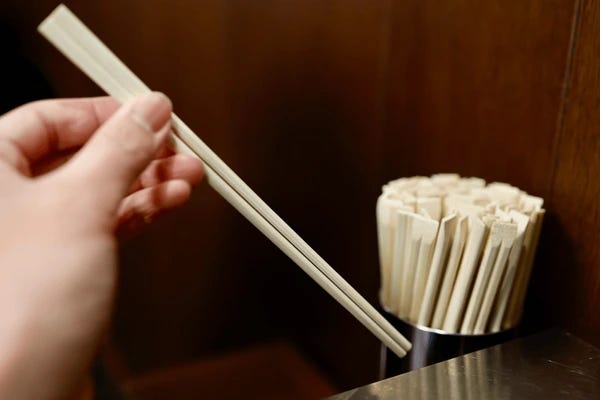Disposable chopstick use, and the rising ‘My-Hashi’ movement in Japan
My chopstick experience in Japan was very different to that of Korea. I had a preconception of Japan being very eco-friendly and sustainably-minded. Therefore, I was surprised when I found that almost every restaurant and shop used disposable chopsticks. In fact, it is reported that approximately 24 billion pairs of disposable chopsticks are used every year in Japan - that’s over 65 million per day. Japan's continued use of disposable chopsticks (waribashi) over more sustainable options is due by several cultural, practical, and economic factors:
Cultural Norms and Aesthetics: Waribashi have been deeply integrated into Japanese dining culture since the Edo period (1603–1868), with many people preferring the traditional aesthetic. Japanese meals often focus on delicate presentation, and light wooden chopsticks are more suitable for handling foods like sushi and sashimi.
Hygiene and Convenience: Japan places a strong cultural emphasis on cleanliness, and single-use chopsticks are perceived as more hygienic than their reusable counterparts. The convenience of disposable chopsticks increases efficiency in restaurants by avoiding the washing up!
Economic and Supply Chain Factors: Japan imports a significant amount of disposable chopsticks, primarily from China, where they are produced cheaply in large quantities, making them affordable. Switching to reusable chopsticks would likely increase costs to businesses.
Despite Japan’s attachment to disposable chopsticks there has been a movement towards the use of reusable chopsticks (my-hashi). Some restaurants now offer reusable chopsticks or provide incentives for customers who bring their own. My-hashi has also become a lifestyle statement for eco-influencers. Due to these reasons, amongst others, a market has grown for the sale of portable chopstick sets.
There are, however, still barriers to the growth of the my-hashi movement. The greatest of these, in my opinion, concern hygiene and convenience. Counteracting this is the development of more practical, hygienic cases and products to address these issues. For example, Marna is a Japanese brand known for innovative and user-friendly kitchenware, and they offer my-hashi sets with thoughtful hygienic designs. Marna cases are designed to reduce bacterial buildup, including features such as air vents and antibacterial coatings.
The my-hashi trend is a practical, culturally aligned approach to reducing waste that combines individual action with social and environmental responsibility. As eco-friendly lifestyles become more normalised, my-hashi may continue to gain traction, especially as businesses and communities support sustainable alternatives to disposable items. Today, the my-hashi trend continues as a meaningful part of Japan’s move toward reducing single-use items and promoting a more sustainable lifestyle.






